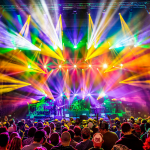Without a doubt, technology is shaping the future of entertainment and media. It’s transformed the way we consume, communicate and connect with the outside world.
Cloud providers
More and more organizations in the entertainment industry are turning to the cloud to manage their computing and storage needs. It’s easy to recognize the benefits of flexibility, security and scalability. For these organizations, having the ability to quickly scale up and down processing capacity when needed changes the cost curve for producing content. Once the content is ready, advanced search and smart content recommendations lead to increased consumption.
According to a blog post by Steve Guggenheimer, Corporate Vice President at Microsoft, speaks how Crackle, a unit of Sony Pictures Television Networks, selected Microsoft Azure as a streaming service partner. Crackle programs Hollywood movies, popular TV shows, original series and feature films for the world’s connected audience. Azure helps power the streaming network’s services and allows consumers to view content at anytime, anywhere on every connected device.
Artificial Intelligence
When people hear the term “artificial intelligence” or “AI”, they often think of robots that can think and respond to their outside world…much like Rosey the Robot on the Jetsons. Right now, we all interact with AI, often without realizing it. If you have ever asked Siri or Alexa a question, you are working with Artificial Narrow Intelligence, which focuses on the completion of a single task (speech or facial recognition). Rosey is a great example of Artificial General Intelligence, that focuses on all human tasks.
In the entertainment industry, AI is changing the creative process. Movie studios are now using AI to create movie plot points based on past box office performances, using scenes proven to be effective getting viewers to watch.
When it comes to media consumption, it’s all about the viewer demands and preferences. The viewer demands of watching when they want, where they want and on the device of their choosing. Thanks to complex algorithms, viewers are still having their leisure time dictated from them, based on data provided by their own behavior.
Virtual and Mixed Reality
At variety.com they note that one of the fastest growing segments of the technology world, the VR market is one to watch out for. Per SuperData Research, who specializes in virtual reality market intelligence, stated in 2017 that the VR market was worth $1.8 billion in 2016. Predictions for 2018 vary between $9 and $13 billion. Forecasts from Greenlight Insights and Road to VR estimate revenues to hit $38 billion by 2026.
The entertainment industry is now harnessing the power of VR by creating events that submerse viewers in their experience. Last summer, the European Soccer Championships were shown in VR, giving them the full experience of being at the game. The Pokemon Go craze was tiny introduction to the capabilities of mixed reality, it certainly showed just how interested people are in immersive experiences. See emarketer.com for more on this.
Maximizing Big Data
Machine learning makes deep analytics possible, making the opportunity for smart advertising smarter than ever before. Product placements will be a thing of the past…in the future, you’ll be able to order your favorite songstresses’ jeans by simply clicking on the screen.
The digital transformation happening in the media and entertainment business primarily focuses on marketing and increasing revenue. But the exciting thing is they also focus user experience and engagement, and getting content to audiences where and when they want it, on whatever device they’re using.


